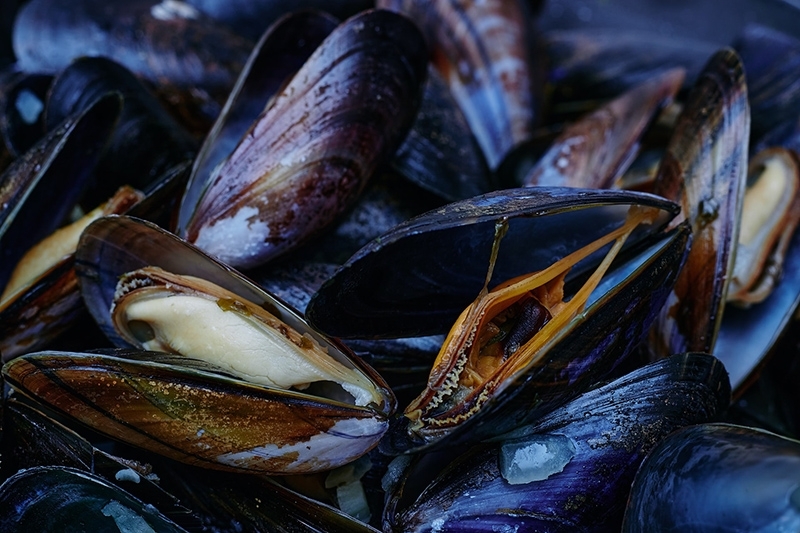Affixing floating wind farms, mussel ‘muscles’ may know how
The University of Nottingham, UK, has launched a project to investigate how mussels stick to wet and wave-hit rocks using collagen-rich sticky threads, ending in adhesive pads, known as plaques and how this might solve materials questions.

Through investigating how mussel plaques adapt to grip on to different surfaces, the researchers aim to unlock novel engineering solutions to securely join dissimilar man-made materials, preventing them from pulling apart when subjected to stress and weight. One example being how best to anchor the floating foundations of an off-shore wind farm to the sea bed.
The three-year project also aims to mimic the unique structural characteristics of sea mussel plaques, to inform the design of new, ultra-lightweight and porous yet durable materials for use in aerospace and transport manufacturing.
Professor Tao Liu, from the University of Nottingham, is leading the £320K Leverhulme Trust-funded project.
He explains, ‘Mussels can achieve a steadfast grip on pretty much any material surface even while being pounded by the sea. Their adhesive pads demonstrate an incredible load-bearing capacity, and the stiffness and the surface texture pattern of the material they stick to play important roles in that behaviour. However, the exact physical mechanism of the plaque-surface interaction has not yet been established. Discovering this will provide engineers with an inspiring example of how different materials can be joined together to resist external stresses. This gives us an opportunity to explore new engineering solutions by bio-mimicking sea mussel plaques.’
The adhesive structure of a mussel plaque consists of an outer, dense protective cuticle layer and a low density, porous plaque core, which work in a cooperative way. A plaque core exhibits a highly porous structure, consisting of a foamy network of pores at different length scales and reinforced by fibre bundles.
Existing research has demonstrated that a plaque core can achieve good load bearing capacity and strength under tension and shear (forces that cause layers or parts to slide against each other in opposite directions). In contrast, manmade porous materials such as foams or honeycombs have very limited load bearing capacity and strength under the same forces.
Mechanical testing and advanced imaging facilities will be used to evaluate the responses and failure mechanisms of the mussel plaque and its adhesive. 3D printing technology or Electron Beam Lithography will be used to recreate surface texture patterns of materials before manipulating the stiffness and the surface texture pattern to understanding how this can influence plaque adherence. Test samples copying the internal structures of a mussel plaque core formed under various forces, and with different materials, will be manufactured using 3D printing technology, as will material joints inspired by this natural behaviour.
Meanwhile, a test rig will be built to analyse the way the plaque responds to various loading scenarios when it is attached to different materials. Traction force microscopy (TFM) will also be adopted for the study to measure the forces exerted by a mussel plaque on a surface it is gripping.







